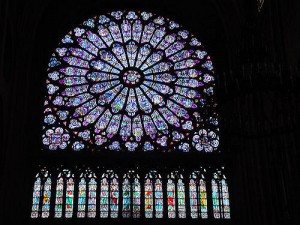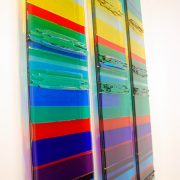Stained glass future in doubt
Churches around the United States are finding themselves in a new battle – one that pits their cherished stained glass artwork against the environment. Stained glass suppliers and manufacturers are being limited by federal regulations governing lead and other heavy metal emissions from glass furnaces. That makes the future of stained glass uncertain. It also means that churches will have an increasingly difficult time getting stained glass windows made, repaired and replaced.
Stained glass cost may exceed market demand
The US Environmental Protection Agency is considering new regulations that will significantly limit the emissions from glass furnaces. Ordinary glass does not emit significant pollution, but colored glasses – many of which are made by combining metallic salts with raw materials for glass – can emit high levels of heavy metals like lead, cadmium, manganese, chromium, cobalt, copper, nickel and uranium.
While some of these metals are stable at room temperature, the glassmaking process heats the metals to the point of vaporization. Most of the vaporized metals are released into the furnace exhaust. Furnace exhaust can be filtered, but the filtration systems are extremely expensive, and beyond the budget of most glass producers.
In addition, current federal regulations provide exemptions for smaller glass furnaces, but new regulations would lower the filtration requirements. The required filtration systems would likely be too expensive for small glass furnaces. Stained glass windows are completely customized, and can exceed $20,000 apiece. The loss of smaller glass producers would likely increase the price of stained glass beyond the reach of most churches, and increase the amount of time required to fulfill stained glass orders.
One alternative to stained glass is painted glass. Painted glass windows can provide a similar effect to stained glass windows, but do not compromise the environment during production. In addition, painted glass windows are easier and less expensive to repair and maintain.
If you’d like more information about glass paint, please visit the rest of our site. If you’d like to purchase Glassprimer™ glass paint, please visit our online store .
Photo Credit: Sheta Chow , via Flickr.com




